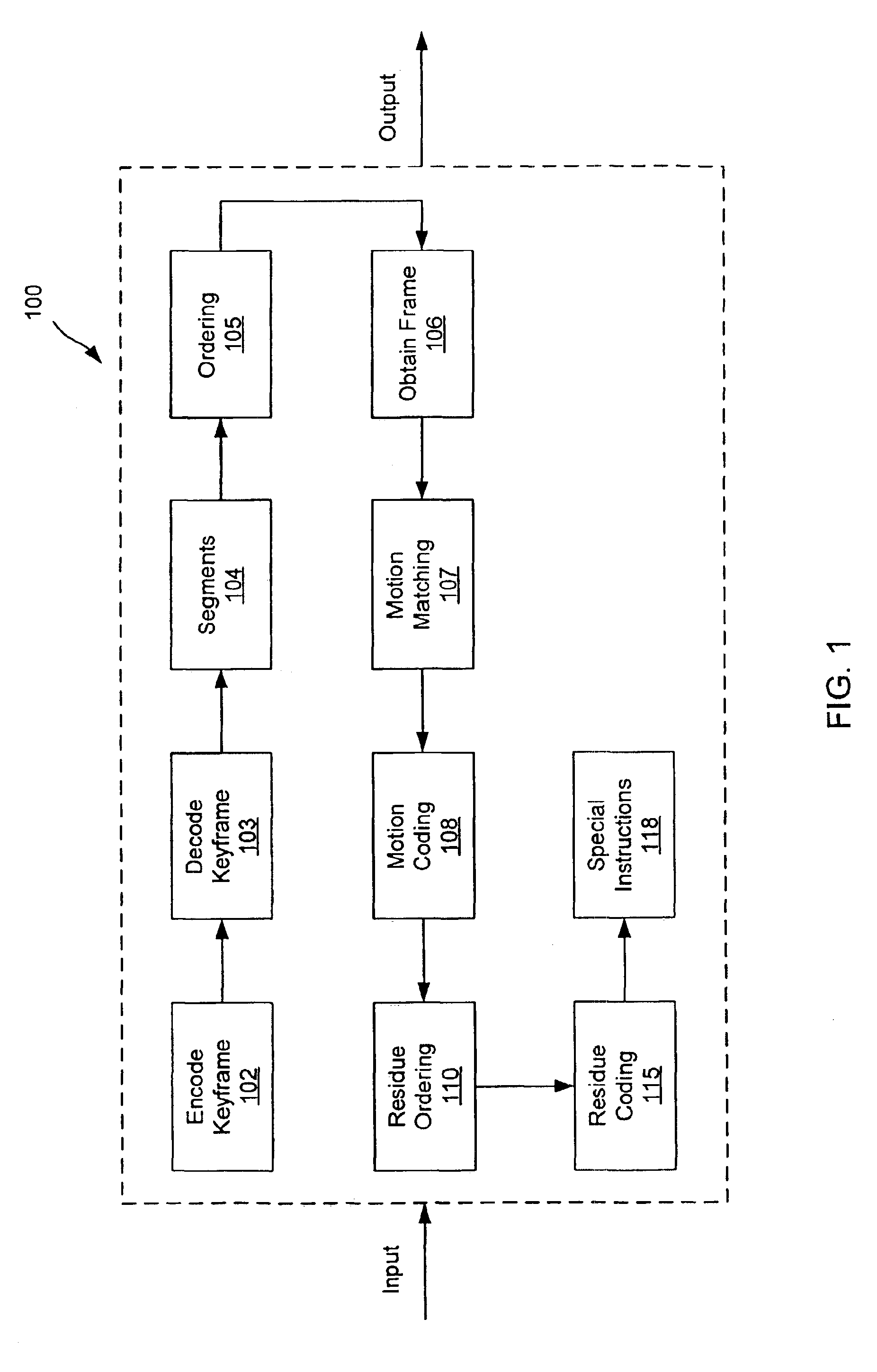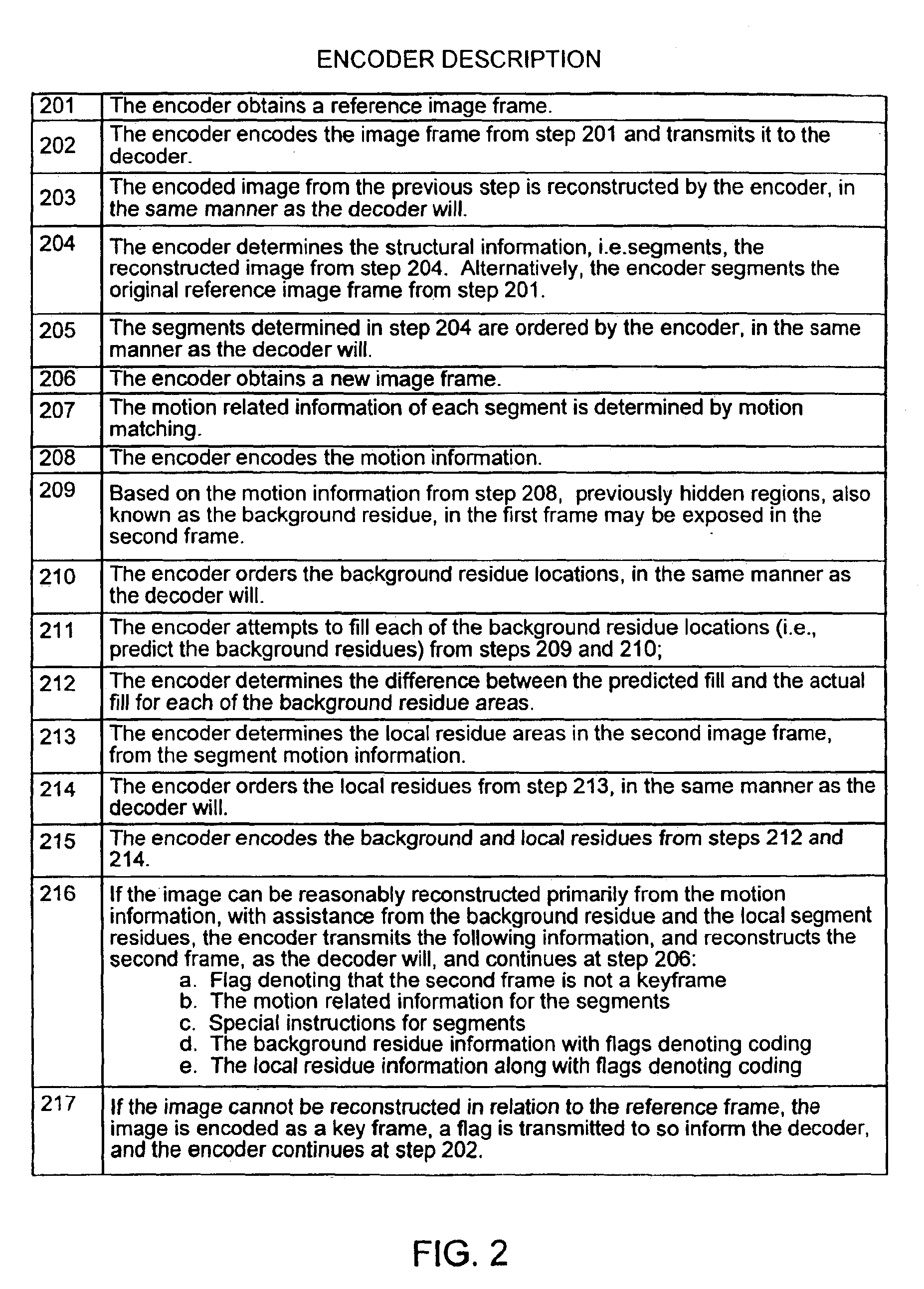Method and apparatus for efficient video processing
a video data and video processing technology, applied in the field of compression of video data, can solve the problems of reducing the overhead of video-intensive applications, reducing the bandwidth of current transmission modes, and consuming precious bitstream space, so as to reduce overhead, increase compression efficiency, and reduce the effect of overhead
- Summary
- Abstract
- Description
- Claims
- Application Information
AI Technical Summary
Problems solved by technology
Method used
Image
Examples
Embodiment Construction
1. Overview
The following sections provide a description of one embodiment of the invention using an encoder a decoder, and structural information (hereinafter in this embodiment “segments”) including details specific to this embodiment and not necessarily required in other embodiments of the invention.
1.1 Encoder
FIG. 1 is a block diagram of an exemplary encoder for use with a compatible decoder as will be described later with respect to FIG. 3 and FIG. 4, and FIG. 2 is an overview of the operation of the encoder of FIG. 1. At step 201, encoder 100 obtains a first (e.g., reference) image frame. At step 202, functional block 102 of encoder 100 encodes the image frame from step 201. At step 203, the encoded image from step 202 is reconstructed by functional block 103 of encoder 100, in the same manner as the decoder will reconstruct the image. At step 204, functional block 104 of encoder 100 segments i.e. obtains the structural information from, the reconstructed image, the segments be...
PUM
 Login to View More
Login to View More Abstract
Description
Claims
Application Information
 Login to View More
Login to View More - R&D
- Intellectual Property
- Life Sciences
- Materials
- Tech Scout
- Unparalleled Data Quality
- Higher Quality Content
- 60% Fewer Hallucinations
Browse by: Latest US Patents, China's latest patents, Technical Efficacy Thesaurus, Application Domain, Technology Topic, Popular Technical Reports.
© 2025 PatSnap. All rights reserved.Legal|Privacy policy|Modern Slavery Act Transparency Statement|Sitemap|About US| Contact US: help@patsnap.com



